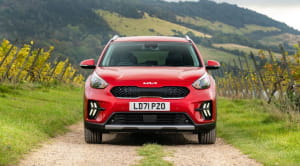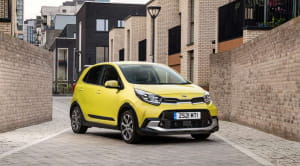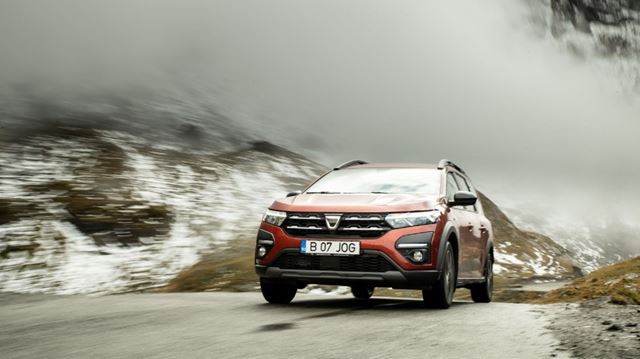
Looking for a great value holiday, or a great value family car? Romania offers both. We ventured to fabled Transylvania to try out the remarkably affordable Dacia Jogger on some seriously twisty roads
Here’s a brand-new, seven-seat family car for supermini money – yours for just £16,645, or under £250 per month with a deposit of a few hundred quid. We're putting the Dacia Jogger through its paces with a test drive across its home country through Bucharest, Sinaia, Bran, Brasov and Sighisoara.
When it comes to comical car names, the Dacia Jogger is right up there with the Mazda Bongo, Subaru Brat, Great Wall Wingle and the mighty Mitsubishi Winky. In fact, along with the Duster, the current Dacia line-up has two strong contenders for the most amusingly named cars of all time. But while the Jogger might get a giggle or two, there’s nothing funny about its price.

With the cost of living on everyone’s mind right now, the Jogger is a good news story among the gloomy financial headlines. Of course, Dacia has been producing budget-friendly hits for a while now. The Sandero has frequently held the title for the cheapest new car on sale in the UK, and the brand is now a familiar sight on British roads. But who or what is Dacia? How do they make ’em so cheap? And is the cut-price Jogger actually any good?
To answer all of that we’ve come to the place where Dacia was born in 1966, at the height of Communist rule, and where it still has its HQ and factory: Romania. In the ’60s, as now, the idea was to build reliable, affordable cars for the people. The company was dubbed Dacia, pronounced ‘dat-chia’, after the name given by the Romans to the region now known as Romania (which in turn is named after the Romans).
Arriving in Romania
Bucharest, the Carpathian Mountains and Sinaia
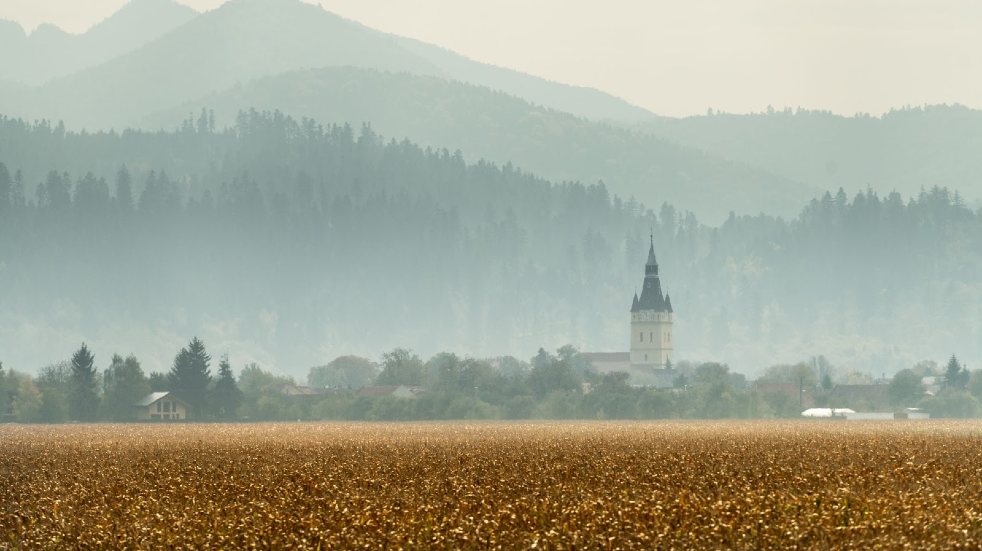
It’s a fairly big country – about the same size as Britain by area – but our plan is to cram in as much as possible in a couple of days, on a route you could easily do yourself. Flights are cheap. Food is cheap. Hotels and hire cars are cheap. And yet, as we’re about to discover, Romania is rich in breathtaking landscapes,beastly history, beastlier wildlife and arguably the best driving road in the entire world.
From Bucharest’s international airport we join the frenetic traffic of the capital’s industrial outskirts – where lorries set the grand-prix pace and street dogs dice with death – and escape onto a less nerve-jangling dual carriageway. After an hour the road begins a slow climb into the Carpathian Mountains, where the scenery changes rapidly. It’s mid-October, the thickly forested slopes are ablaze with autumn’s fiery colours, and the rocky peaks wear scarves of mist. At this time of year it feels a bit like driving around New England, crossed with hints of the Scottish Highlands when the trees thin out.
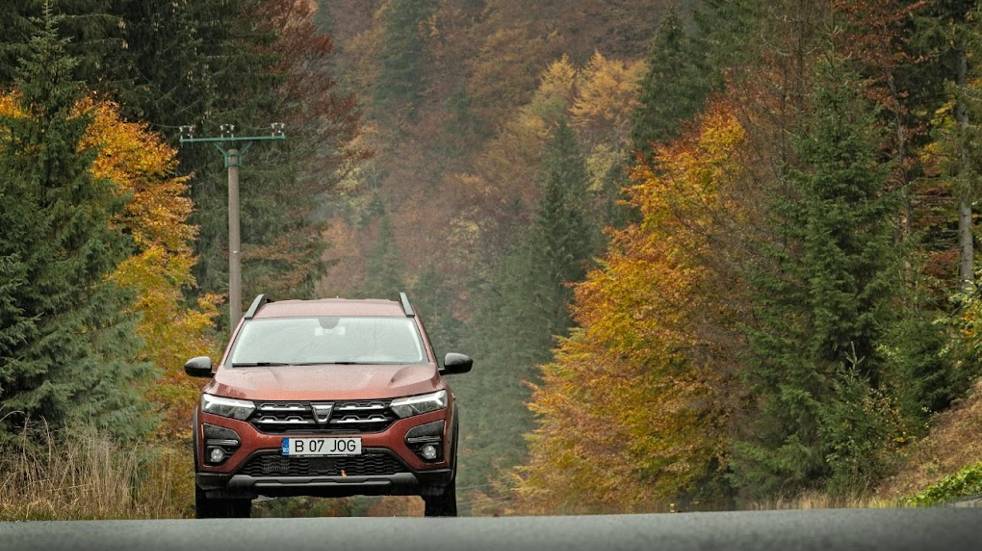
Around 100 miles north of Bucharest we reach the mountain resort of Sinaia as it gears up for ski season. Developed in the 19th century as a retreat for King Carol I), it has the familiar feel of any alpine resort, with chalet-style buildings, an elegant railway station, pretty water fountains, flowerbeds and hanging baskets. But reminders of the communist era are hidden in plain sight – from the huge monolithic factory on the edge of town to the unwelcoming concrete slab of the Hotel Sinaia on the main street (it’s much classier inside and, in the Soviet spirit, only £60 per night).
Dacia Jogger practicality
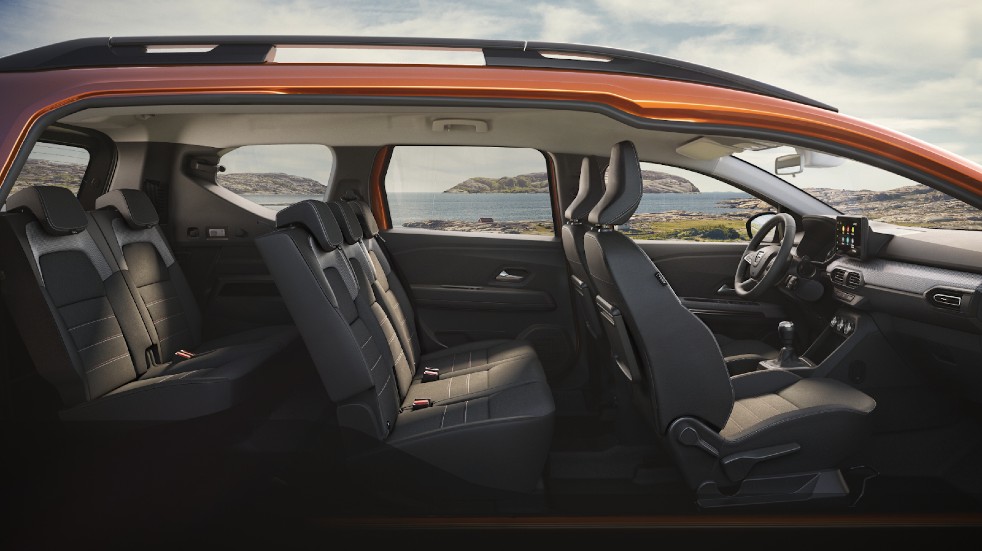
The Jogger would be useful transport for a family ski trip. Unlike some seven-seaters, there’s room for grown-ups in all three rows, and those in the rearmost seats won’t feel squished. Going seven-up reduces boot space, but the Jogger has a trick up its sleeve: the roof rails turn through 90 degrees to create crossbars, so you can quickly mount a roof box, bikes, surfboard, skis, a kayak, or even an old mattress for the tip. Or you could remove the rear seats completely (they weigh just 10kg each) to create more boot space, instantly converting your people carrier into a roomy estate car. So it’s not just a bargain – it’s the ultimate automotive two-for-one.
Exploring vampire country
Translyvania, Bran Castle and Brasov
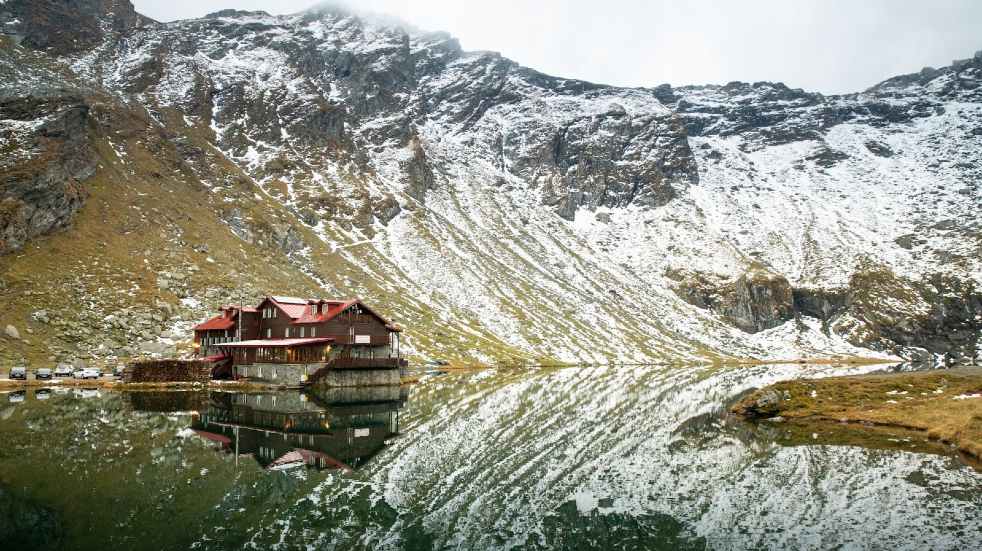
From Sinaia we head further into the Carpathians, the road occasionally fringed by locals selling bucket-loads of mushrooms hand-picked from the dark, almost mystical forests. There’s definitely something spooky about the woods. Maybe it’s the creeping, eerie mist, or the fact there are wolves and bears out there. Or maybe it’s because we’re now deep into Transylvania, a place it’s impossible to visit without conjuring images of its most famous blood-sucking export.
Bram Stoker created Dracula in 1897, apparently inspired by ghoulish Transylvanian folklore and the infamous Vlad the Impaler, a brutal 15th-century ruler of these lands otherwise known as Vlad Dracula (‘son of the dragon’). Stoker never actually visited Romania, but his description of Castle Dracula seemed to fit with the horror-story style of Bran Castle – a gothic, fairy-tale fortress perched high on a rocky precipice about 20 miles south-west of Brasov. As we learn on a quick tour, its real history was as a Romanian royal residence and customs house, but that hasn’t stopped locals cashing in on the vampire tales – on our way out we buy some souvenir fangs from one of several market traders who will happily bleed you dry.
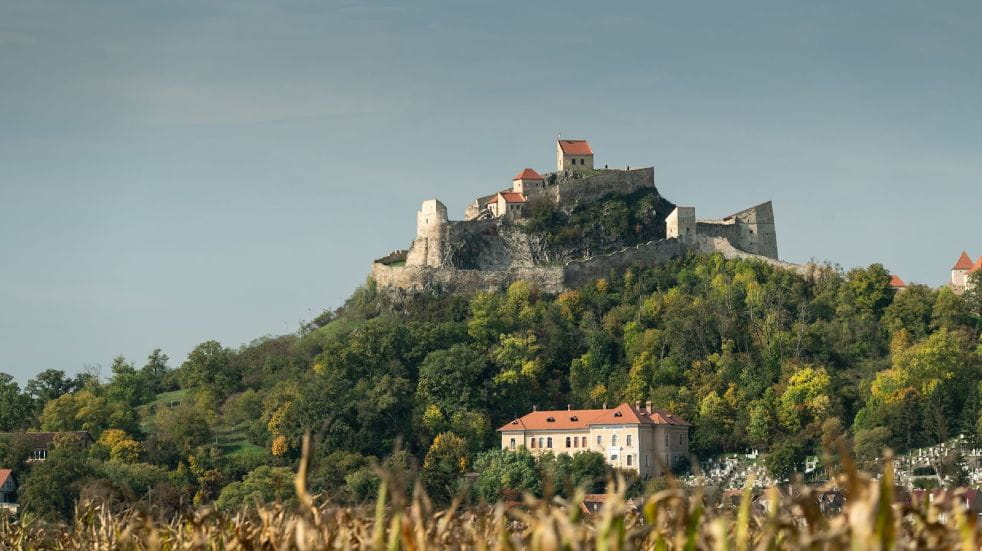
With thoughts of full moons, fluttering bats and howls of distant wolves, we leave Bran and drive north. As the mountains shrink behind us the scene flattens as we cross a countryside plateau, vast fields of maize glowing gold in the afternoon sun. The view through the windscreen is of a different era, a time of horses and carts, shepherds tending their flocks, and giant, hut-shaped haystacks spiked with wooden poles and pitchforks. The road deteriorates and soon we’re dodging potholes, occasionally slowing to a crawl where the surface has crumbled.
Dacia Jogger costs and details
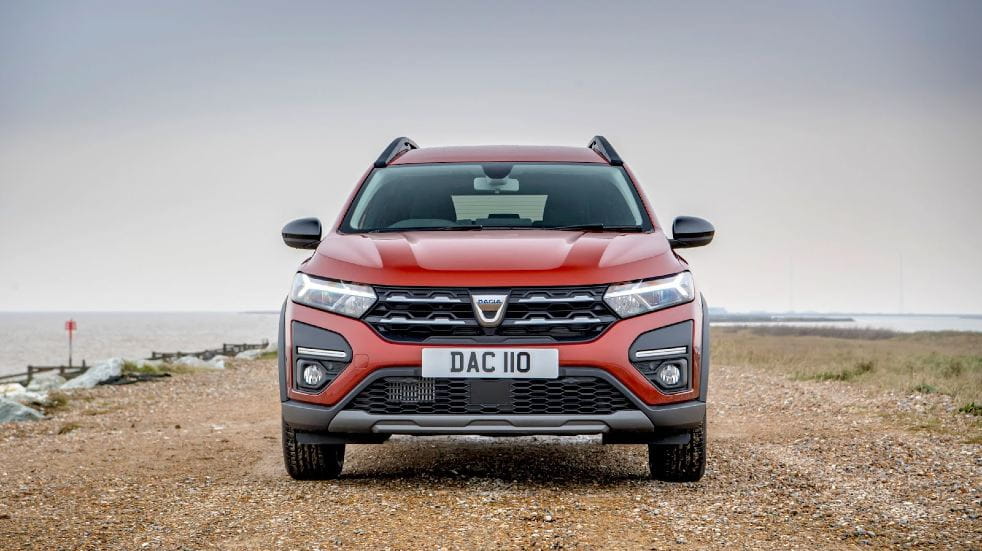
It’s a good workout for the Jogger, and it’s coping pretty well. The key to Dacia’s cost-saving goes way back to the early days, when the fledgling company struck a deal with Renault to lightly rework and re-badge its cars. Indeed, most recent Dacias were still based on last-generation Renaults – if you were to X-ray a Duster you’d see the bones of an old Clio. But the Jogger feels more contemporary, more sophisticated. Indeed, it’s not just a rehashed old Renault – it shares its platform with the very latest Clio.
Downsides? There’s only one engine choice (a 1.0-litre petrol – more on that later), the materials are a bit plasticky and the electric handbrake is too slow to engage and release. But that’s about it. It’s very well equipped for the money, with a decent infotainment system on all but the most basic of models. And you have to keep reminding yourself of the £16k starting price – that’s literally half the cost of its nearest seven-seat rivals such as the SEAT Tarraco and VW Touran. Admittedly they’re posher and more powerful, but who cares when you’re pocketing the difference.
Medieval Sighisoara
Sighisoara
Our next stop is the UNESCO World Heritage Site of Sighisoara, said to be the most beautiful town in Romania. Founded in the 12th century by German craftsmen and merchants – and the birthplace of our old friend Vlad – Sighisoara is a colourful jumble of creaky medieval houses, churches and clock towers. We leave the car – the ancient citadel area is mostly pedestrianised – and wander around the uber-knobbly cobbled streets and open squares. Wood-scented incense fills the air and creates patches of atmospheric fog in the covered timber walkways around the old ramparts. Hungry, we top up on langosi smantana – a sort of pizza-sized fried donut topped with sour cream and grated cheese – and head back to the car to find some Rennie.
One of the world’s greatest driving roads
The Transfagarasan Highway
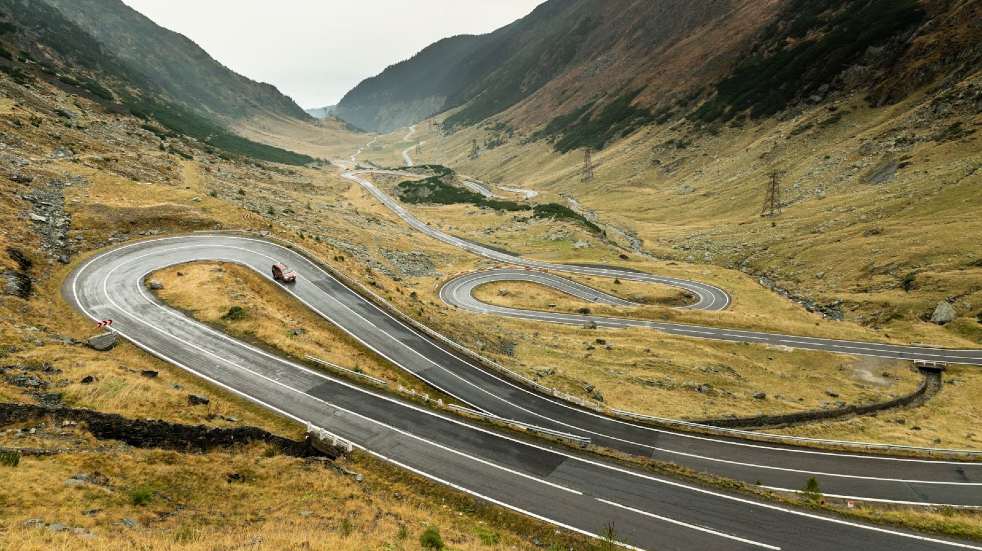
For our final leg we turn south again, the Carpathians eventually reappearing through a pale blue haze. Up there, rising ceaselessly into the sky, is what we’ve really come for: the world-famous Transfagarasan Highway, a mountain pass stretching for more than 70 miles from end to end. It’s one of Romania’s most spectacular and popular attractions – perhaps helped by an appearance on Top Gear back in 2009, when Jeremy Clarkson declared it the greatest driving road in the world, boasting “every great corner from every great race track lined up one after the other”.
Built between 1970 and 1974 on the orders of Nicolae Ceausescu – the dictator who met his downfall in the 1989 Revolution – the Transfagarasan was supposedly a strategic route to provide quick military access across the mountains should Romania be invaded by the USSR. But maybe old Nicolae just liked a good drive. Because whereas some mountain passes are just sky-high stacks of first-gear switchbacks, this one is wide, well-surfaced, and the looping hairpins are joined together by long, sweeping sections. From the very top it looks like a life-size Scalextric set meandering up the valley, climbing over 2,000 metres to the snowline (it’s usually open from June to October before closing for the risky winter months).
Driving the Dacia
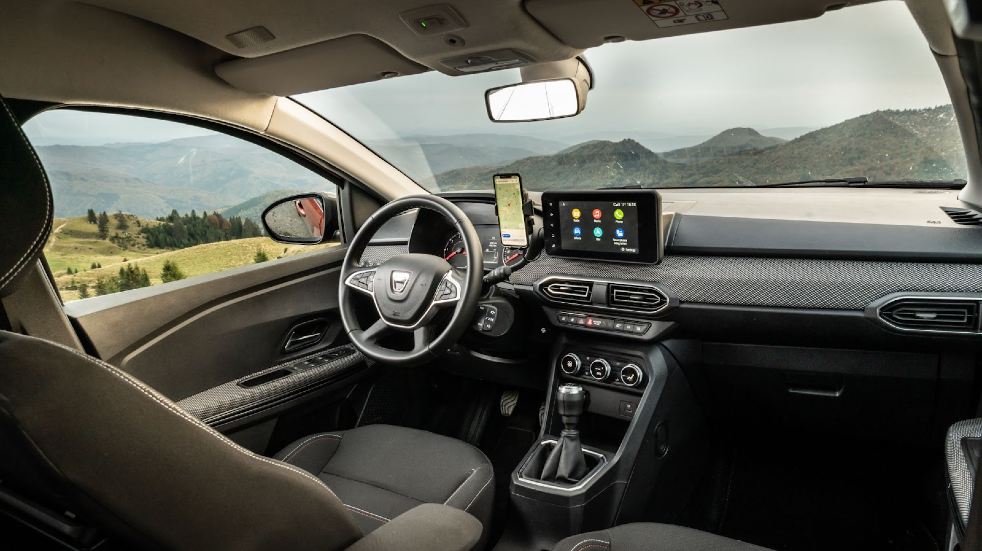
A seven-seat family car is never going to be a hill-climb champion, but the Jogger’s having a good go. It may only have a 1.0-litre, three-cylinder engine but there’s plenty of torque, so you can use third gear all the way up. It whooshes up the slopes, turns in crisply enough and generally feels quite lively – helped by a total weight of just 1,205kg, which is much lighter than most seven-seaters. How would it cope with more passengers and their luggage? It might not skip up the mountain like it has today, but it’s probably gutsy enough to get to the top without running out of puff.
Lake Balea and the final leg
Lake Balea and Vidraru Dam
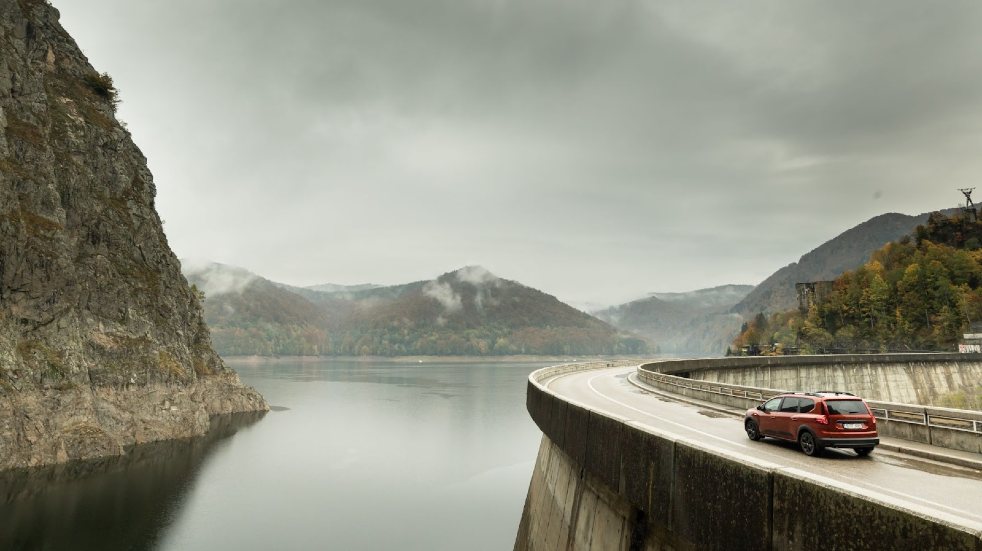
At the summit is the glacial Lake Balea, surrounded by a couple of log cabin-style hotels, a gondola station for the slightly tired-looking cable car, and some food shacks. We snack on cheesy polenta balls with long, gamey sausage before pushing onwards, through the rocky tunnel connecting the north side to the south. Thick fog causes us to drive at walking pace into the murky darkness and pop out the other side, into yet more fog, gradually descending like a plane emerging from the clouds.
Winding down the other side, we pass a string of shed-sized, roadside chapels, whizz across the top of the 166-metre-high Vidraru Dam, and back into the woods. And that’s where we see it: beside one of the very last corners, snuffling around for food, is an absolutely enormous, real-life bear. Around 60% of Europe’s brown bears live in these mountains, and although we’d seen several warning signs, nothing really prepares you for having one right outside your window. How thick is the glass? Do crash tests involve sturdy punches from bear paws? Thankfully, after eyeing us up for a moment, the bear lumbers casually across the road in front of the car, jumps over a wall and disappears.
Safe and sound, the Jogger keeps on running.
Do more with Boundless
Save up to £5,537* on a new car with Griffin. Griffin has exclusive savings on a wide range of makes and models, including Ford, VW, Renault, Honda, Mazda, Volvo, Seat, Nissan and many more. Click here to find out more.
To benefit from amazing offers, along with dozens of other deals on holidays, days out, experiences, shopping and more, join Boundless today. To find out how, visit www.boundless.co.uk
*Save £5,537 on the SEAT Tarraco 150 FR 7 seat DSG. UK Recommended list price £37,455. Griffin Price £31,918. All savings are subject to change – please check with Griffin at the time of enquiry. Full terms and Conditions apply, please see website for details.




